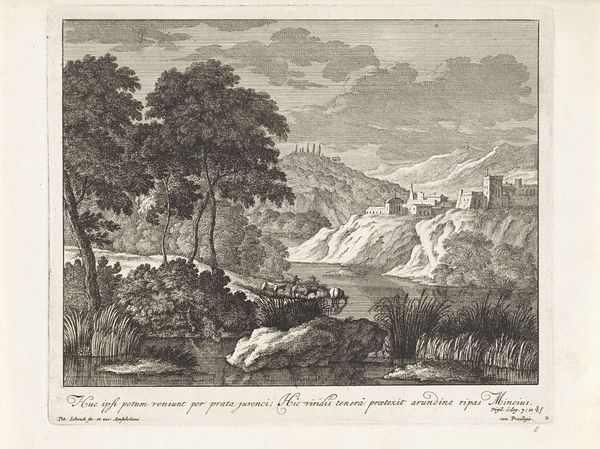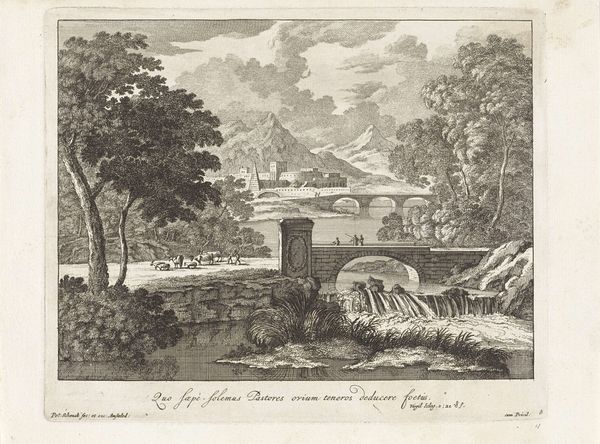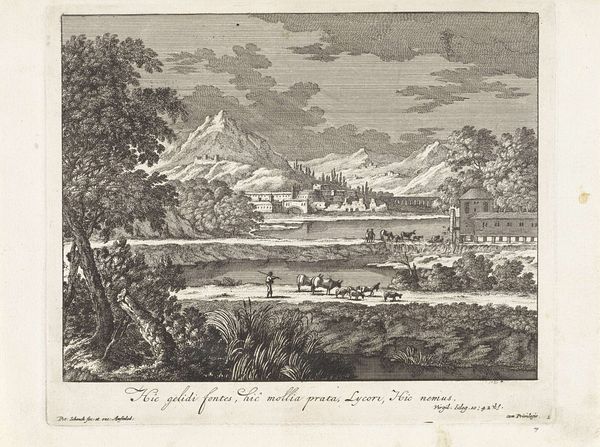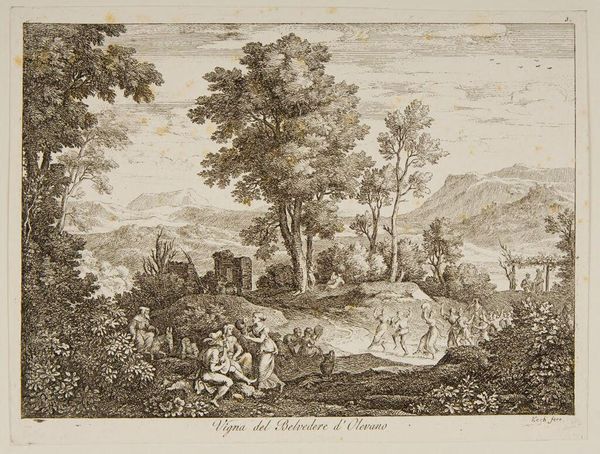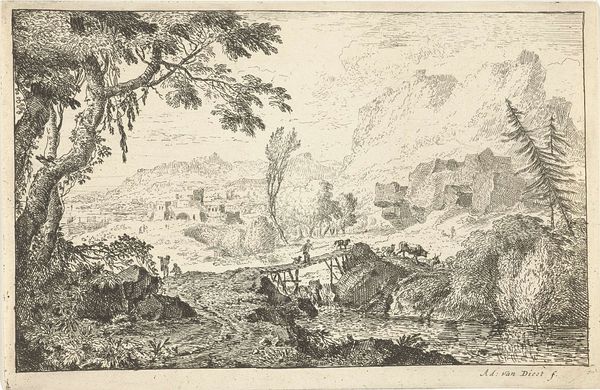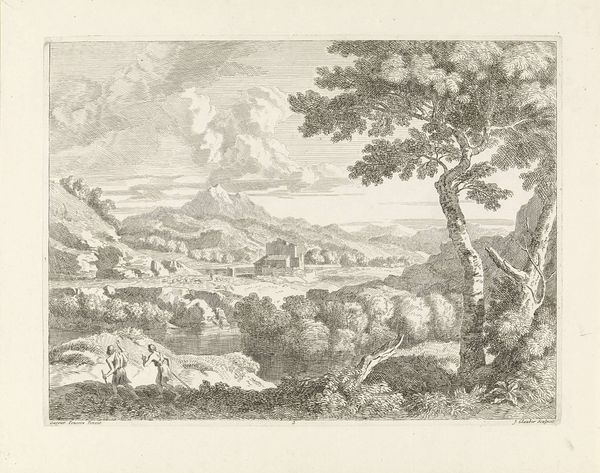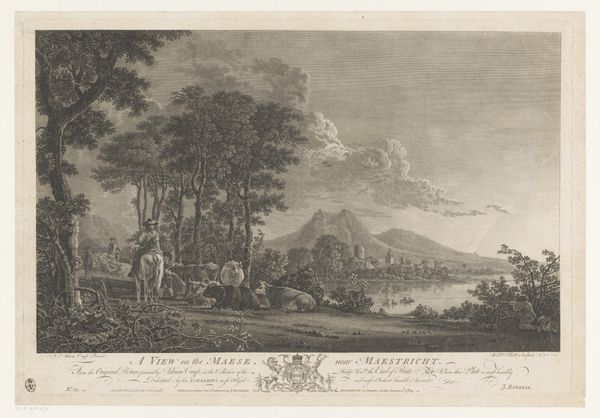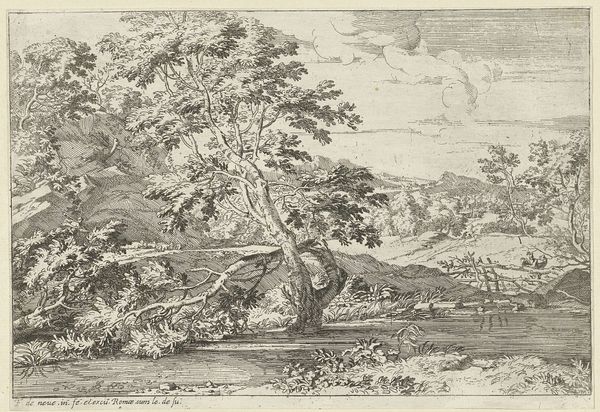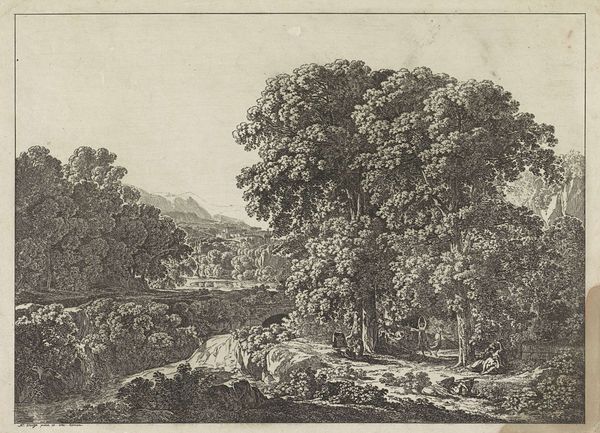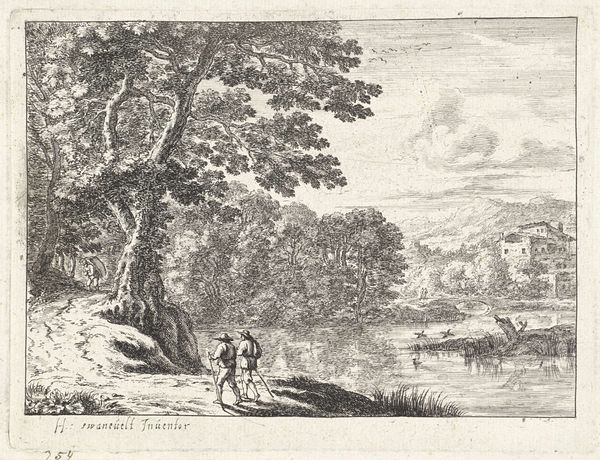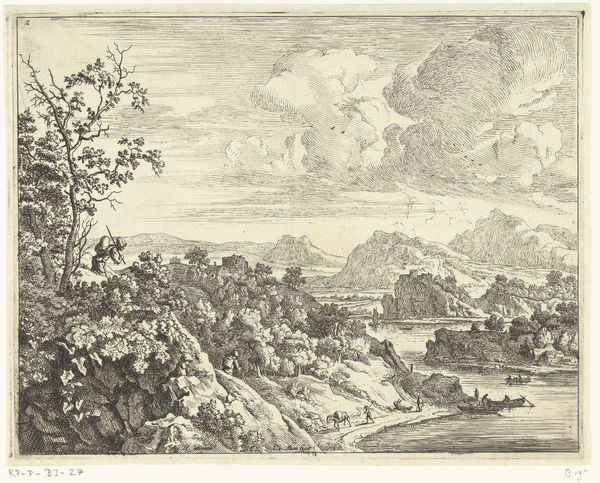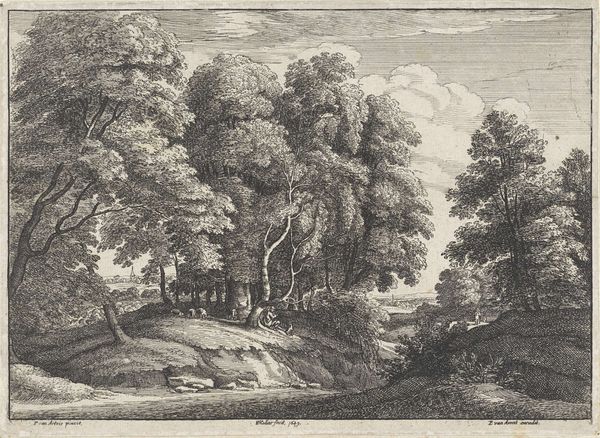
print, etching, engraving
#
dutch-golden-age
# print
#
etching
#
old engraving style
#
landscape
#
classicism
#
engraving
Dimensions: height 167 mm, width 201 mm
Copyright: Rijks Museum: Open Domain
Editor: So, here we have "Landscape with water and reeds" by Pieter Schenk, dating from between 1675 and 1711. It's an etching, currently held at the Rijksmuseum. The detail is amazing. How would you interpret this work? Curator: Considering the means of production, we're looking at an etching, a printmaking process demanding skilled labor. The matrix, most likely copper, reveals a hierarchy: from the miner extracting raw material, to the metal worker, the etcher, and finally, the printer. How does the image itself participate in this economic and social context? Editor: Well, it depicts a tranquil, almost idealized landscape. Not a sign of that labor! Curator: Exactly. Consider the Dutch Golden Age. Wealth accumulation fueled demand for these idyllic scenes. This print becomes a commodity, consumed by a rising merchant class who sought to legitimize their status through association with idealized nature and classical motifs like the architecture nestled within the hill. Editor: So, the material and its depiction reinforce social structures. How does classicism factor into it? Curator: Classicism’s visual order – see the carefully constructed perspective and balanced composition – provided a vocabulary for this newly empowered class to express its vision. It represented wealth, learning, and control, neatly packaged for consumption and display. Even the text reinforces that association with antiquity. Editor: I see. It’s not just a pretty picture, it's bound up in a whole system of labor, material value and class. Curator: Precisely! It reveals how art making becomes entangled within systems of economic power. Editor: That's fascinating. I’ll never look at a landscape print the same way.
Comments
No comments
Be the first to comment and join the conversation on the ultimate creative platform.
